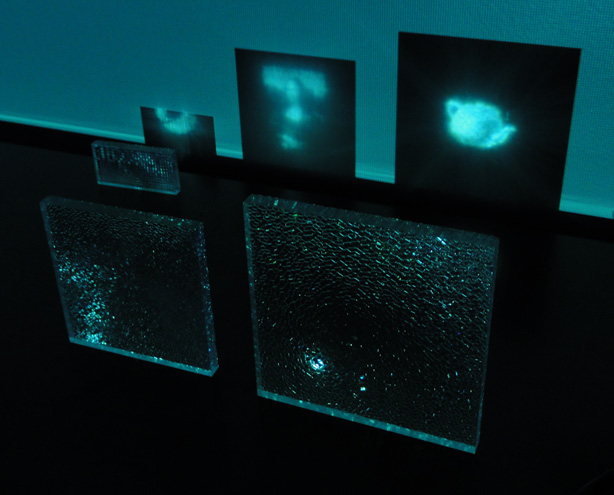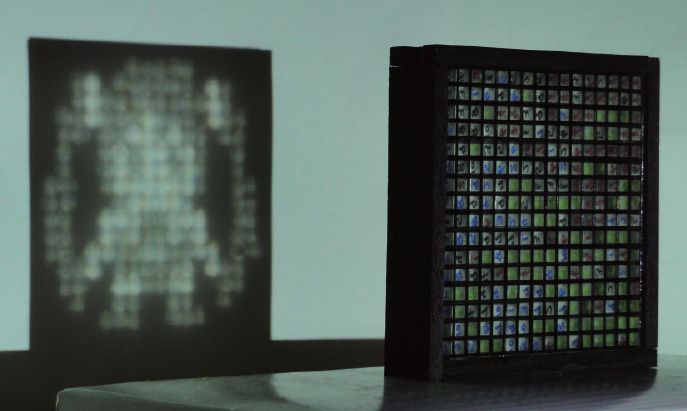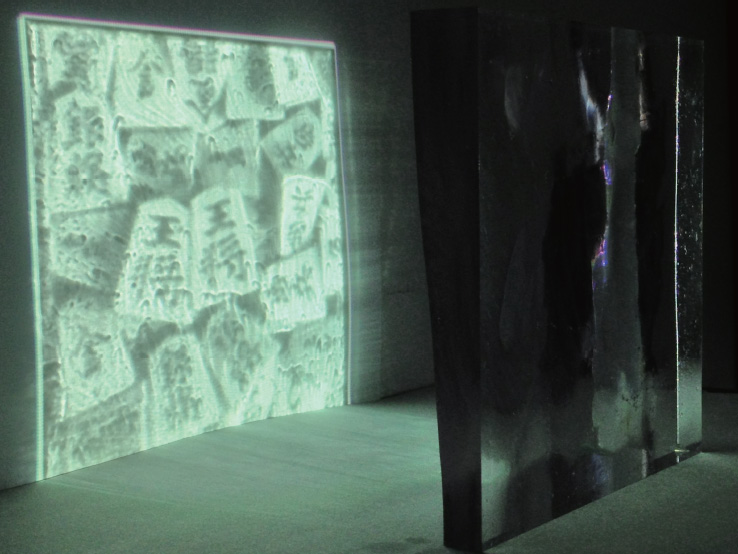Geometry design for desired caustics



In this project, we developed methods for automatically computing the geometry of the transparent refractive object
which produces a desired caustic pattern specified by the user.
First, we developed a method to represent the surface refracting the light (refraction surface) using a discrete set of facets (left image).
|
"所望の集光模様を生成する透明物体の一設計法" (in Japanese) Yonghao Yue, 岩崎 慶, 陳 炳宇, 土橋 宜典, 西田 友是 Visual Computing / グラフィクスと CAD 合同シンポジウム 2011 (a local symposium in Japan), No.2, June 25-26, 2011, Shimane, Japan [technical report] |
Then we developed another method for making the object rearrangeable, by incorporating a set of transparent refractive sticks (middle image). By rearranging the same set of sticks, we can obtain different caustic patterns (pixel art).
|
"Pixel Art with Refracted Light by Rearrangeable Sticks" Yonghao Yue, Kei Iwasaki, Bing-Yu Chen, Yoshinori Dobashi, and Tomoyuki Nishita Computer Graphics Forum (Proc. of EUROGRAPHICS 2012) Vol.31, No.2, pp.575-582, May 13-18, 2012, Cagliari, Italy [Abstract, paper, video] |
Finally, we developed a method for computing continuous refractive surface, and enabled production of high quality caustics, including sharp and thin features (right image).
|
"所望の集光模様を生成するための連続面からなる透明物体の形状設計法" (in Japanese) Yonghao Yue, 岩崎 慶, 陳 炳宇, 土橋 宜典, 西田 友是 Visual Computing / グラフィクスと CAD 合同シンポジウム 2012 (a local symposium in Japan), No. 33 (poster), June 23-24, 2012, Waseda University, Japan [technical report] |
||
|
"Poisson-based Continuous Surface Generation for Desired Caustics" Yonghao Yue, Kei Iwasaki, Bing-Yu Chen, Yoshinori Dobashi, Tomoyuki Nishita Submitted to ... [technical report] (first version: May 22, 2012; revised: Feb 13, 2013) |
Caustics, transparent refractive objects, geometry, NC machine
Collaborators:
Kei Iwasaki (Wakayama University)
Bing-Yu Chen (National Taiwan University)
Yoshinori Dobashi (Hokkaido University)
Tomoyuki Nishita (The University of Tokyo)
Acknowledgments:
This work is suppoted by JSPS Grant-in-Aid for Research Activity Start-up (23800011).